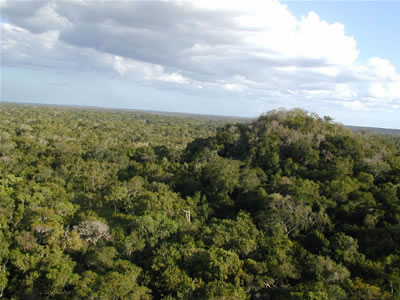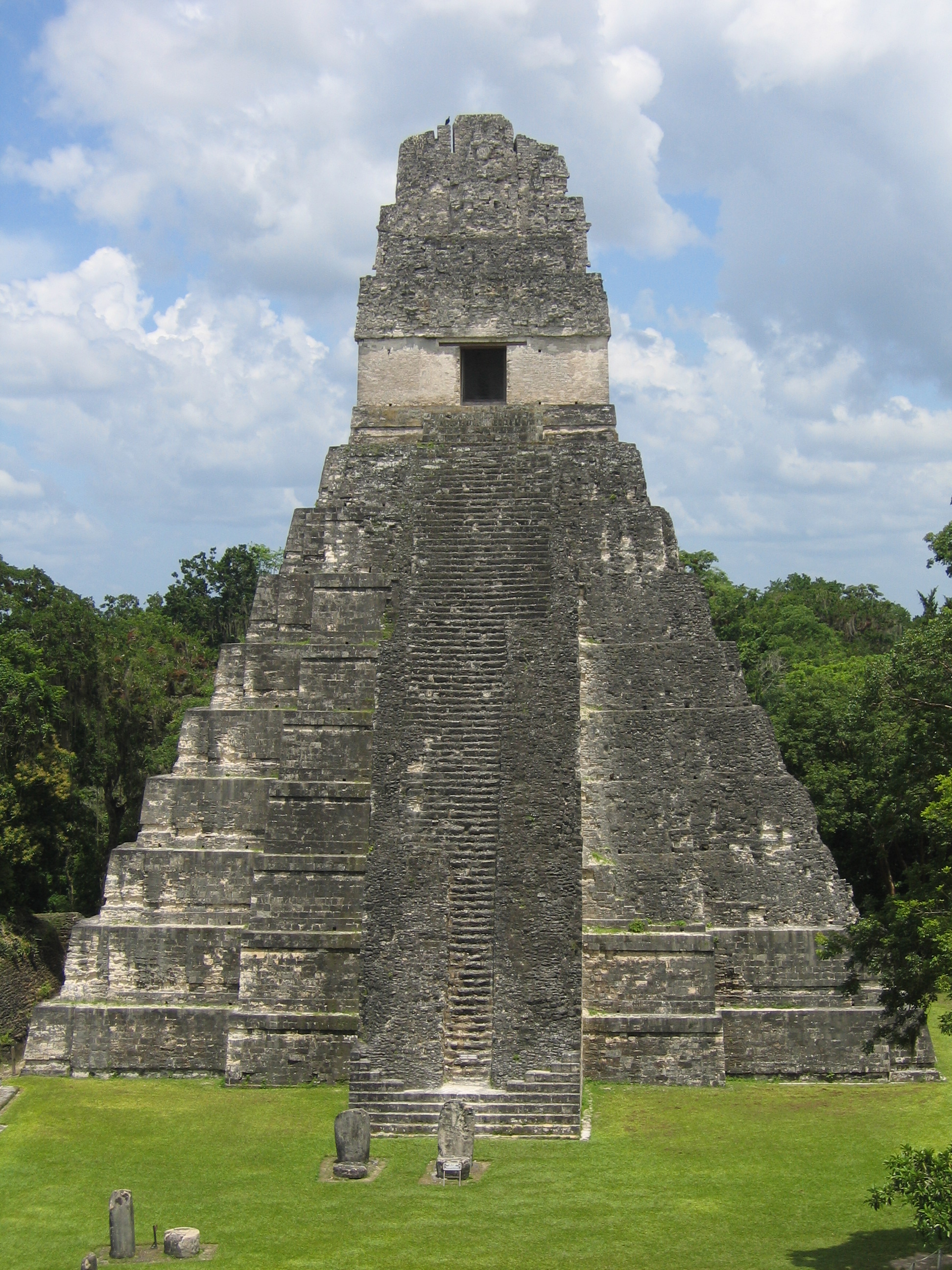“The Maya Biosphere Reserve in the Petén region of northern Guatemala, together with the Maya Forest of Belize and Mexico represents one of the largest areas of tropical forest north of the Amazon and the northernmost tropical forest in the Western Hemisphere. It is also the site of three contiguous UNESCO recognized biosphere reserves: the Maya Biosphere Reserve in Guatemala, Calakmul, and Montes Azules Biosphere Reserves in the southern Mexico…The population of Petén has grown from 25,000 to more than 500,000 (2002) during the last 30 years. Most of these people have settled in regions south of the Maya Biosphere Reserve, but as lands in the southern Petén are occupied and new logging and oil roads are opened in the reserve, increasing pressure is applied to the biosphere itself. The Tikal World Heritage site is a core area. The site brings 180,000 national and international tourists each year, and as a result tourism is the single largest income producer. Promoting diverse sources of income-generation for local people is a major concern. Guatemalan and international conservationists work on core area delimitation and protection, combining efforts to find economic alternatives to slash-and-burn farming in order to forge a new future for local populations in the Maya Biosphere Reserve” (UNESCO).
“Population has a huge impact on Guatemala’s ecological diversity,” David López-Carr, an associate professor in the University of California-Santa Barbara’s Geography Department, wrote in an e-mail to the New Security Beat. Most striking, according to López-Carr, are total fertility rates in rural areas, which remain “over 5 and much higher still – higher than 6 – in the most remote rural areas where ecological diversity is highest.” Despite the fact that most migrants move to Guatemala City, smaller cities, or the United States, López-Carr wrote that the “tiny fraction (probably under 5%) that move to remote rural areas have a major impact on biodiversity and forest conversion.” López-Carr pointed out that “in core conservation areas of the Maya Biosphere Reserve, in-migration has swelled the population in some regions by nearly 10% annually during the past two decades” (New Security Beat).
The surge in population threatens ecosystems in the Maya Biosphere Reserve. Apart from logging, farming, and ranching in protected areas, drug trafficking, poaching, and looting of Maya artifacts is rife. “The forest area of the Reserve has shrunk by 13 percent over the last 21 years according to the non-profit organization Rainforest Alliance, which has several community development projects in the region. Some of the most extreme deforestation has occurred in the Laguna del Tigre and Sierra del Lancandon National Parks. Resources are scarce for the protection of the Reserve by guards and park rangers, and the area is often considered a lawless wilderness” (Wikipedia).
The New York Times recently ran an article about the many threats to the Reserve: “There’s traffickers, cattle ranchers, loggers, poachers and looters,” Richard D. Hansen, Director of the Mirador Basin Project (considered one of the Top Ten Archaeological Discoveries of 2009), told NYT. “All the bad guys are lined up to destroy the reserve. You can’t imagine the devastation that is happening.” Eric Olson, senior associate of the Mexico Institute at the Woodrow Wilson Center, agrees that drug trafficking is a major problem in the Petén, a region of northern Guatemala that lies within the Biosphere. “Petén’s isolation has made it possible for the biodiversity of the area to survive and thrive during periods of great social turmoil, especially in the 1980s,” Olson told the New Security Beat. “However, the isolation also makes it an ideal place for drug traffickers to move their illegal product northward.” According to NYT, peasant squatters in search of farmland constitute an additional threat because they “often become pawns of the drug lords,” and, in some instances, “function as an advance guard for the drug dealers, preventing the authorities from entering, warning of intrusions, and clearing land that the drug gangs ultimately take over” (New Security Beat).





